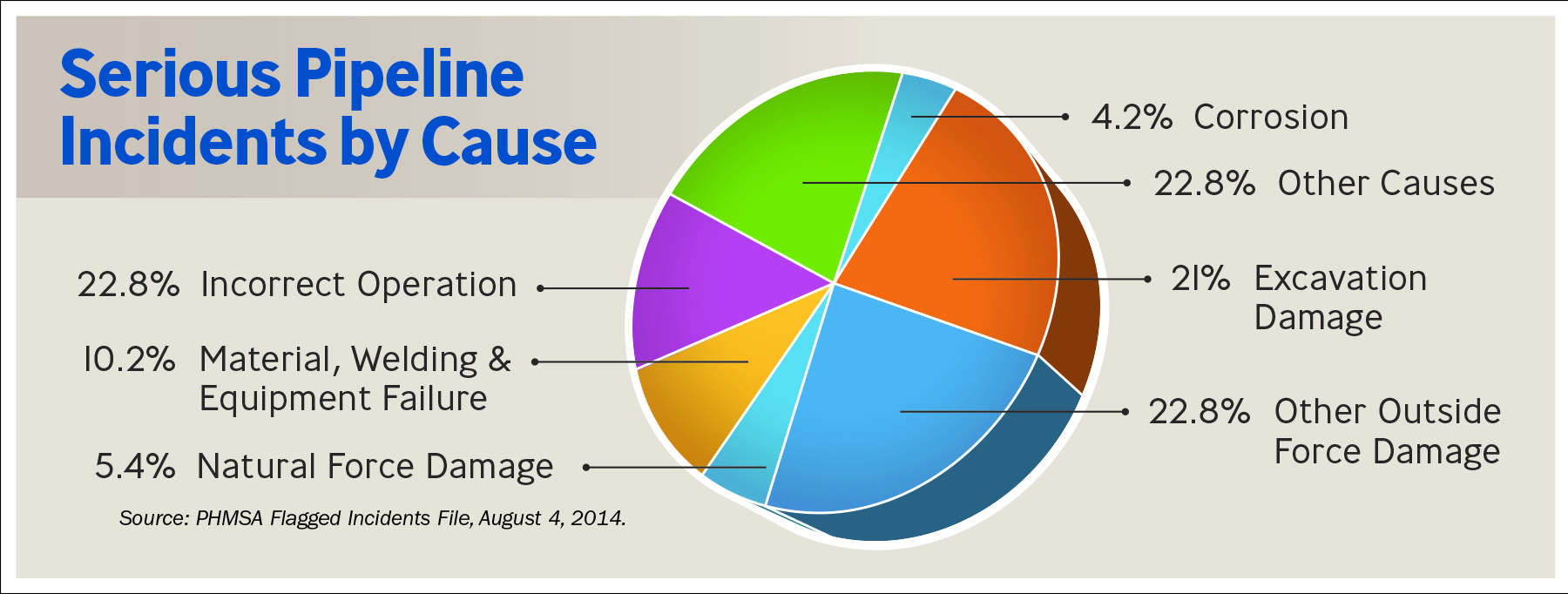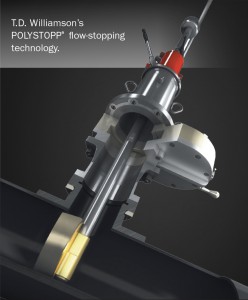December 2014, Vol. 241, No. 12
Features
Distribution Delivers Innovation To Pipeline Replacement Prioritization

Ian Davidson, member of Parliament: “Let me be clear. If the [natural gas distribution] companies find themselves in a position where the number of health and safety breaches is increasing, a plausible defense for them is to say that they cannot afford to do it because you are squeezing them too tightly.”
Ian Davidson, member of Parliament: “Let me be clear. If the [natural gas distribution] companies find themselves in a position where the number of health and safety breaches is increasing, a plausible defense for them is to say that they cannot afford to do it because you are squeezing them too tightly.”
David Gray: “Yes, they might say that.”
The setting was the House of Commons, United Kingdom. The year, 2006. The testimony given by Davidson, a member of the Public Accounts Select Committee in the British House of Commons, representing the Committee of Public Accounts. Gray is with the Office of Gas and Electricity Markets (OFGEM). This was question 105 of 139.
For over an hour, OFGEM explained to the committee the difficulties faced by UK regulators, utility companies and the issues with aging pipelines. The committee was unmoved.
Public Accounts Committee: “You are supposed to be looking after the interests of consumers … I would have thought that physical safety must be a predominant consideration … According to this, [ductile iron pipe] fails unpredictably. How much of it is down there and do you have to dig it all up again?”
“The best thing is for us to get that data to you,” stated the OFGEM representative. He would need to come up with the answer.
At a time when 39% of the UK gas network was considered at-risk, and the last statistic for leaks was 23,000 per year, it seemed OFGEM needed to come up with a lot of answers.
For the past two decades, concerns have been mounting on both sides of the Atlantic regarding the aging infrastructure beneath some of the world’s most populated areas.
Recently, in New York’s East Harlem neighborhood, an explosion destroyed a five-story building and killed eight people. A pipeline that was 127 years old. In Lanarkshire, Scotland, just a few days before the Christmas holiday in 1999, a family of four died when their house exploded. Investigations determined that the cause of the explosion was natural gas leaking through fractured pipes.
Pipelines worldwide are leaking, cracking and creating the potential for catastrophic accidents. Natural gas customers are clamoring: Why are those old iron pipes still down there?
Doing More With Less
The task of replacing outdated gas pipelines typically falls on gas distribution network (GDN) operators. Historically, however, in a tightly regulated, price-control model, it has not been easy for GDN operators to come up with the funds to replace pipelines.
GDNs are tasked with an astounding array of responsibilities: They must be stewards of the environment while meeting shareholder demands and customer service expectations. GNDs are held responsible for the safety and integrity of their systems, and are expected to respond to emergencies, market gas, invest in infrastructure and head projects to maintain and enlarge the grid.
What’s more, GDNs are expected to pay for much-needed upgrades and maintenance work that will prevent future disasters and loss of life. But recovering the cost of those upgrades is complicated.
Fortunately, regulatory bodies and GDNs worldwide are working together to face this situation head-on.
In a June 2014 interview with the U.S. National Association of Regulatory Utility Commissioners (NARUC), Communications Director Robert Thormeyer expressed optimism about the industry’s response and actions following the East Harlem explosion.
“Never say, ‘It will never happen again,’ but we are becoming more prepared and can reduce high-profile incidents like the one in New York,” he said. “I think everyone is aware that it takes federal and state government, utilities and the public to do this. The awareness is there; the states are working on it.”

Thormeyer is right. The states are working on it. As of July, 38 states have adopted accelerated rate-recovery mechanisms that allow GDNs to apply for special approval to raise prices to recover pipeline replacement costs. Another development in the United States is the Distribution Integrity Management Program (DIMP), a state-federal partnership that requires GDNs to formally prioritize pipeline replacement projects, ensuring that the oldest and most damaged pipelines are replaced first.
Revolutionary Regulatory Model
While America is working on its own solutions, the United Kingdom’s OFGEM has been far from idle. In fact, the organization recently implemented an unprecedented regulatory model called RIIO.
RIIO formulates utility revenue with a simple calculation: Revenue = Incentives + Innovation + Outputs.
In most other countries, the onus typically falls on GDNs to proactively secure funding for the research, technology or manpower required to safely and cost-effectively replace networks.
RIIO, on the other hand, requires operators to include plans and anticipated results of their technological and methodological advances when getting their business models approved. The regulation has tied revenue and innovation together in a way that’s hard to ignore.
“It’s absolutely crucial that we display our work on innovation to OFGEM,” explained a spokesperson for National Grid. “While it may be an option to do very little, it wouldn’t make sense for us in terms of financial revenue, if we didn’t pursue a positive innovation strategy.”
The National Grid spokesperson added the company has taken the call to innovate seriously. The company innovates because it believes that is what’s best for all parties involved. Outside of RIIO funding, National Grid spends between US$3.9-6.6 million per year for internal research and development.
Inspiring Results
Lisa O’Brien, OFGEM senior communications manager, sees RIIO as the new best practices model.
“We are already starting to see elements being adopted across Europe,” she said. “There are a lot of people looking at how we’re regulating.”
And with good reason. After privatization in the 1990s, research in GDN innovations in the United Kingdom started declining. With utilities under tight price controls, there was less funding for large-scale industry-changing projects. The first attempt to address this lack of funding was the Innovation Funding Incentive for Sustainable Development (IFI), RIIO’s predecessor.
According to Darren White, National Grid Project Manager for Innovation and Gas Distribution Network Strategy, IFI was essential to the continued development of GDN research.
“IFI provided dedicated funding for some innovation projects that may not have flown,” he said. “Because of the risk appetite within gas distribution networks, these projects may not have been funded by businesses alone.”
RIIO takes the work IFI started a step further by requiring results and intellectual property rights from projects funded by the program to be shared with other local distribution companies. A portal at smarternetworks.org was launched requiring utilities to post updates on all projects funded by the initiative. It’s a dynamic place, with over 100 projects and flurries of updates from truly motivated utilities.
The system has already had a huge impact on the dynamics of the industry. Take, for example, the RIIO-funded project on Investment Prioritization in Distribution Systems. This project recommends transferrable approaches between the strategies used for the UK water industry main replacement and those for replacing natural gas distribution pipelines.
Just a decade ago, such a project might have been too big and too expensive. Today, the project puts together collaborators in otherwise competing networks: Wales & West Utilities, Northern Gas Networks, Scotia Gas Networks and National Grid.
Case Study: National Grid
National Grid is one of the largest investor-owned utilities in the world. It connects 15-16 million people each day with energy and has operations in the United Kingdom and the United States. In 2012, National Grid collaborated on 17 joint GDN projects. From 2008-2012, National Grid commissioned 83 innovation projects – about 40% secured funding with collaborative partners. A few examples include:
• Condition Based Management System – National Grid plans to invest US$942,000 to build an advanced condition-based risk management (CBRM) system. The CBRM allows the future Health Index and Probability of failure to be simulated and assessed, allowing investment decisions to be prioritized.
• PE Asset Life Research – This US$3.4 million project, funded jointly by National Grid Gas and Scotia Gas Networks, will collect a variety of data related to the United Kingdom’s network of older polyethylene (PE) gas pipes, which were constructed of a less-durable formula than modern PE pipes. To measure the performance of the oldest of these first-generation pipelines, National Grid and Scotia Gas Networks will launch a series of extensive tests to gather data about the pipelines’ performance, current condition, and expected remaining life span.
• Guided Wave Non-Destructive Testing Inspection of Mains Pipelines – New guided wave technology for use in difficult-to-inspect pipelines is being tested by three collaborating companies: National Grid, Northern Gas Networks, and T.D. Williamson. The technology uses bursts of ultrasound fired into the pipe wall material. The wave returns information about corrosion, cracks and pipe-wall thickness. If successful, the new device will enable previously uninspected pipelines to be efficiently inspected and more objectively classified for risk.
Justifying RIIO Readiness
In order to qualify for funding under RIIO, creators of new innovations must take additional steps to prove their technologies align with a set of core stakeholder benefits.

For example, consider POLYSTOPP® technology, which is a flow-stopping method used within PE piping. The technique gives operators an alternative to squeezing the pipe to stop the flow of gas. Although squeezing is a common method of stopping gas flow, it has been demonstrated to initiate cracks in the area of the squeeze.
Under IFI funding, National Grid tested POLYSTOPP technologies on smaller lines and concluded, “National Grid can approve flow stopping operational products for larger diameter pipelines.” To ensure the technology’s eligibility under RIIO, its creators at T.D. Williamson have aligned their technology with stakeholder benefits.
Bright(er) Future
Operators on both sides of the ocean are coming up with innovative ways to ensure the safety and integrity of gas pipelines. Solutions like DIMP and RIIO are helping operators make significant progress toward updating and replacing aging, corroded pipes.
The industry is already leaps and bounds beyond where it was just a decade ago. In one example given by Tom King, executive director of U.S. National Grid, the company has reduced per-mile leak repairs over 40% by following its DIMP program in Rhode Island.
The United Kingdom has experienced similar success: From 1990-2002, an average of four iron-mains-related incidents occurred per year; by 2012, that number dropped to 2.2 per year.
“There is a growing effort to accelerate replacement of pipelines no longer fit for service,” said Lori Traweek, senior vice president and chief operating officer of the American Gas Association. “We have a tremendous opportunity to utilize a resource that is abundant and that offers environmental benefits. As long as networks and regulators keep working together, putting stakeholders at the forefront, the future of gas distribution networks looks very bright indeed.”





Comments